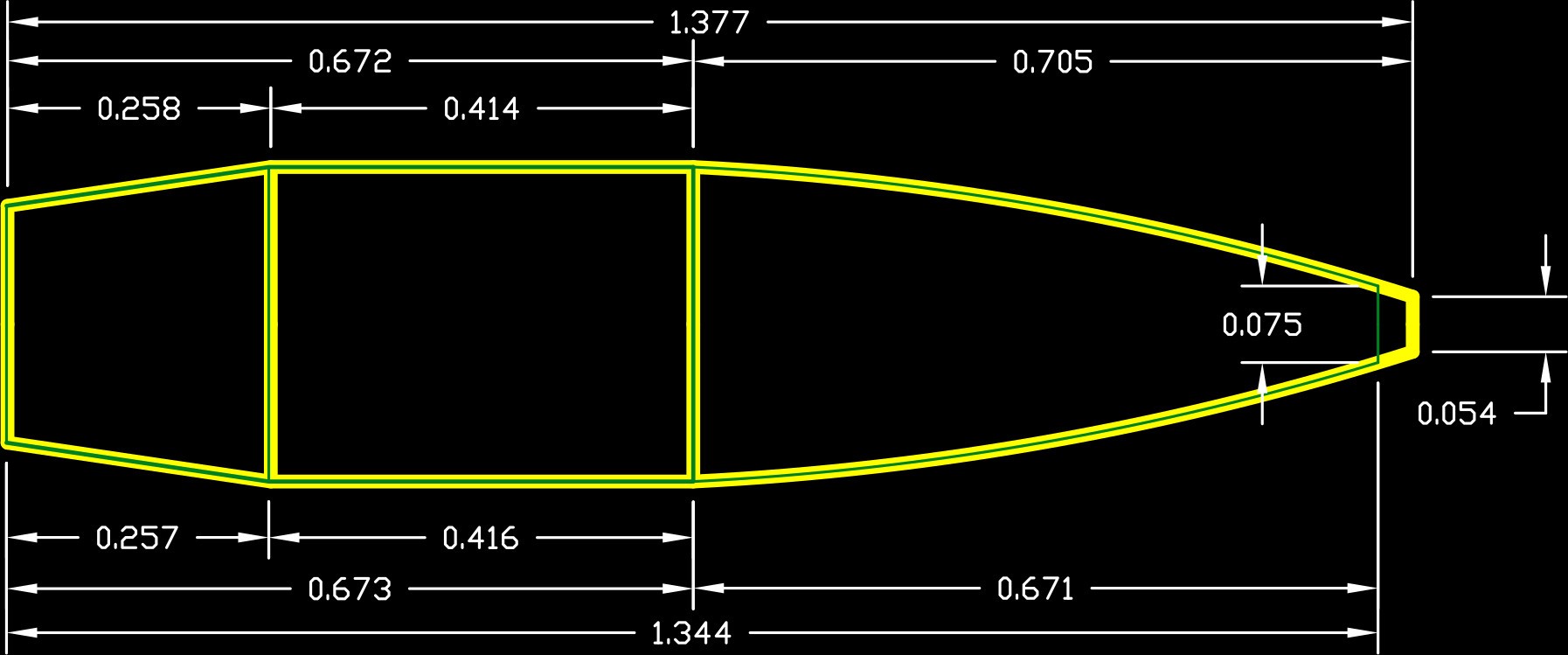Bullets that are fired at supersonic speed experience a tremendous amount of aerodynamic drag. The force of drag is typically around 20-30 G’s. That force is what acts to slow the bullet down so quickly in a short time. That extremely high aerodynamic force is very sensitive to the shape of the bullet, and small variations in the shape can have great effects on the aerodynamic drag. For example, if a bullet has a blunter nose, it will have a lower Ballistic Coefficient (BC), experience more drag, and lose velocity more rapidly during flight.
Ideally, all the bullets in a box are the same (or similar enough) that the shot-to-shot variation in BC due to differences in bullet shape are negligible.
The most typical geometric variations in traditional cup-and-core bullet construction is in nose length and meplat diameter, which tend to correlate. Referencing the image below, you can see the green and yellow line drawings which show how the two dimensions are related: bullets with shorter noses have wider meplats. Both of these are symptoms of a bullet that isn’t formed all the way, and both cause additional drag.

These variations exist in all lots of all bullets, and the standard at Berger is to produce bullets so consistently that the Ballistic Coefficient (BC) for all bullets in the box is essentially the same. Specifically, what this means is we test our bullets with doppler radar, and the criteria for success is that the Standard Deviation (SD) of the BC has to be under 1% of the BC. So whatever geometric variations there are have to be very minimal to meet this standard.
The development of the Meplat Reduction Technology® found in the line of Long Range Hybrid Target bullets dramatically reduces the SD of BC, well below 1%. In many cases we’ve measured BC SD’s at 0.5% and 0.3% which means that every bullet is flying with essentially the same drag, and causing nearly zero vertical dispersion at long range.
We’ve also measured bullets from other brands, specifically the long, heavy for caliber, high BC bullets (which are harder to form consistently) and often find BC SD’s of 2%-3% or more. These bullets have impressive average BC’s, and can sometimes shoot small groups at short range, but the shooter has no way to know how much the geometric variations are affecting vertical dispersion at long range.
When you’re shooting Berger, you can be assured of a level of consistency that’s been developed deliberately, scientifically, and to a high standard of consistency.
Want a bullet that has both a high BC and a consistent BC? Learn more about our new Long Range Hybrid Target bullets.
